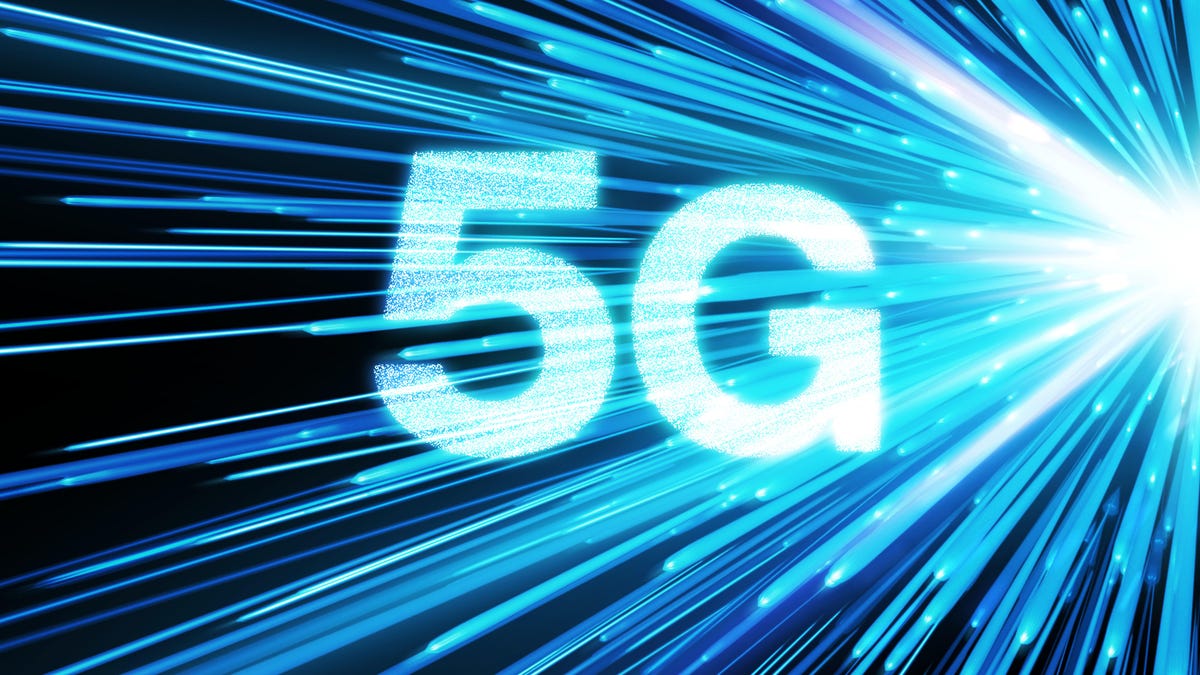Verizon and Dish score big in midband 5G wireless auction
Verizon was the highest bidder in the auction, while Dish walked away with the greatest number of licenses for spectrum seen as key for 5G.

Verizon and Dish were the big winners in the FCC's midband 5G wireless auction, which ended last week.
Verizon Communications and Dish Network were the big winners of the Federal Communications Commission's 3.5 GHz spectrum auction, which concluded last week.
A total of 228 entities bid on so-called midband spectrum licenses worth nearly $4.6 billion. The spectrum in the 3.5 GHz band is considered important for building 5G wireless networks across the country, because it allows for broader network coverage. This should help carriers extend 5G coverage beyond densely populated cities into the suburbs and rural markets.
5G is the next generation of wireless technology rolling out across the world, promising to deliver much faster wireless service and a more responsive network. It's ability to connect more devices and offer real-time feedback is expected to spark a sea change in how we live and work, ushering in new advances like self-driving cars and advanced augmented reality experiences.
Midband spectrum, which is in the 2.5 gigahertz and 4.2 GHz range of frequencies, provides more balanced coverage and capacity due to its ability to cover a several-mile radius with 5G, despite needing more cell sites than lower-tiered spectrum bands.
Wireless giants AT&T and Verizon didn't initially focus on these spectrum bands for 5G and instead invested in millimeter wave spectrum -- extremely high-frequency radio airwaves that offer essentially a souped-up Wi-Fi hotspot.
The winners
That strategy has changed for Verizon, which spent the most on its 3.5 GHz licenses, pledging $1.9 billion for 557 licenses in the 3.5GHz block of spectrum covering about 157 counties throughout the country.
But it was satellite TV provider-turned wireless operator, Dish Network, that walked away with the most spectrum licenses. Dish was also the second-highest bidder in the auction, bidding under the name Wetterhorn Wireless LLC. Dish spent a total of nearly $913 million for about 5,492 licenses covering roughly 3,128 counties throughout the US.
Dish got into the wireless business earlier this year when it acquired assets from Sprint, as part of a deal brokered by the Justice Department to satisfy antitrust concerns the government had over T-Mobile's merger with Sprint. With the new wireless assets, which included Sprint's prepaid brand Boost, Dish became the fourth-largest cellular company in the US. Dish will likely use the new 3.5 GHz spectrum to build a 5G network.
Prior to the T-Mobile deal, Dish had acquired a large stash of wireless spectrum in previous auctions, which it has yet to use.
AT&T and T-Mobile were not active participants in the auction. AT&T ended up with none of the licenses, and T-Mobile walked away with eight. AT&T may be holding out for another midband auction set for later this year. And T-Mobile already has a strong midband spectrum position through its acquisition of Sprint this year. It's been the biggest champion of midband spectrum in the US.
Here comes cable
Cable companies, Charter Communications, Comcast and Cox, rounded out the list of top five bidders in the auction. Spectrum Wireless, which is owned by Charter, spent just over $464 million for 210 licenses covering 106 counties. Comcast, bidding under the name XF Wireless Investment, paid nearly $460 million for 830 licenses across 306 counties. And Cox Communications spent about $213 million for 470 licenses covering 173 counties.
Cable companies have a long history of bidding on wireless spectrum, dating back more than a decade. But the cable companies have never made a big move with their wireless assets. In 2012, Comcast, Cox and Time Warner, which was later bought by Charter, struck a deal with Verizon to give up some of its coveted spectrum in exchange for access to Verizon's wireless network. It's this deal that led the way to these cable giants offering their own branded wireless service, which uses a combination of Verizon's network and their own homegrown Wi-Fi networks.
But now it seems the cable companies are interested in 5G.
Late to the party?
Some critics say the FCC hasn't moved quickly enough to get new licenses of midband spectrum for 5G into the US market. The 3.5 GHz auction is the first auction the agency has held for midband spectrum. Meanwhile, several countries in Europe and in Asia have already embraced midband spectrum.
The next big swath of midband spectrum to hit the auction block will be what's called the C-Band spectrum, which is in the 3.7-4.2GHz range of frequencies.
The C-Band spectrum is likely even more valuable than the 3.5GHz spectrum, because it's spectrum that's commonly available around the globe and is already earmarked for 5G service in several countries. The FCC plans to hold that auction December.

